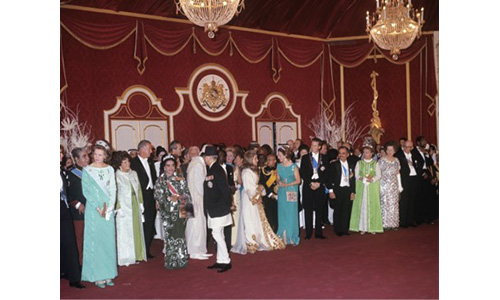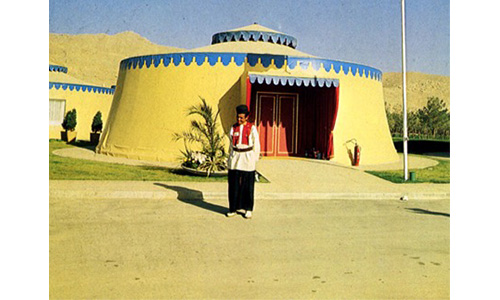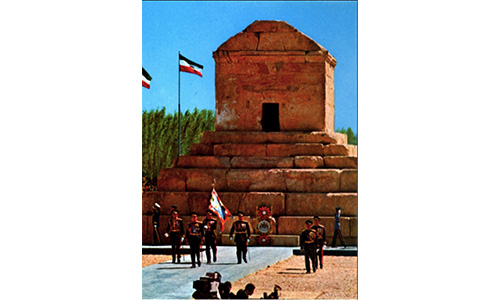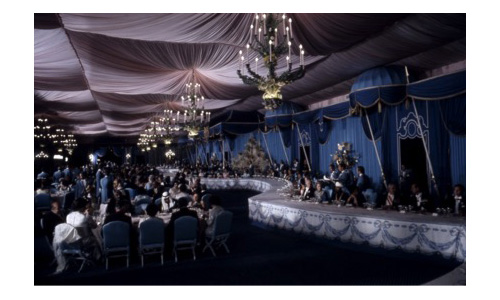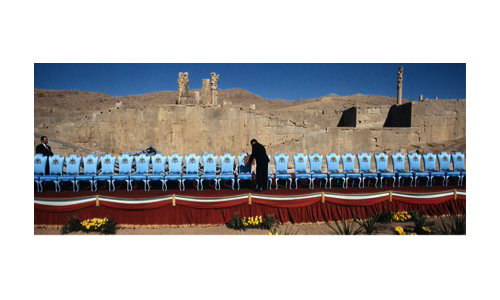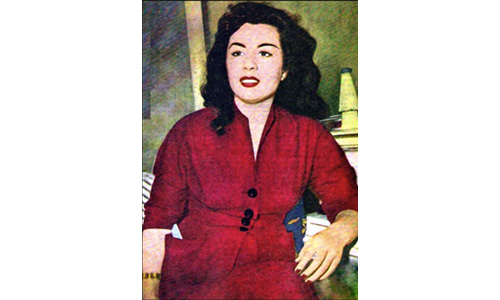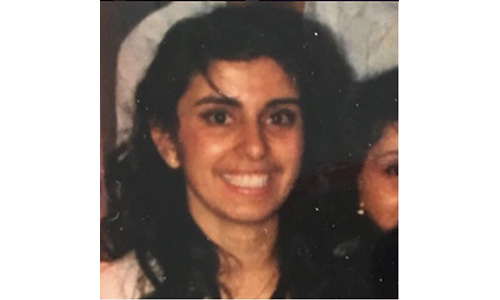“Dear Iran, I write to you as a displaced citizen.”
Letter to a Homeland
Dear Iran,
I write to you as a displaced citizen—a phrase embedded in irony, as I was not born, nor have ever stepped foot upon your borders. I say displaced because while I do not live within your physical bounds, I abide by your nostalgia, the happy memories and sweet remembrances that define my parents, their parents, and so on. I live in the constant reminder that while I may be American, I continue to live within your confines, adhering to your prerevolutionary notions of culturally acceptable behavior and shaping my life choices around emotional bags grabbed in my family’s escape. I am writing to you in inquiry regarding the diaspora, the revolution that ensued, and the cultural identity that I, a first generation Iranian-American, a woman, a writer, and a student of the world, have gathered from it. I look forward to your speedy response, for though I am aware I cannot read the humbly eloquent curves and ellipses of your native tongue—Farsi—I hope to reconcile the emotional disquiet stemming from the break in diplomatic ties between my country—the United States—and my homeland—you.
My first question is one of identity. To my people—a lower-middle-class community, breaking upper—I am now not erooni (Iranian), but “Persian”, a far reaching, Orientalized notion of who we are. The word, as used by hundreds of diasporic Iranians, effectively disconnects you from me, and dismisses the revolutionary tides that guided my family to your current enemy: the West. It asserts that we, a twenty-first-century people, are undeniably tied to the ancient Persian Empire, connecting West Angelinos to the triumph of Cyrus the Great. I do admit, it is absurd, but the terminology stems from that one-year period I mentioned above, the 1979 revolution, and the aftermath to which you and your clergy created aliens with the outcry of the engelab (revolution). The aliens of course were my family who then feared persecution and left all they knew for all they didn’t, as Jews often do.
The former question, the one of identity and your role in shaping my self-consciousness, is fettered by the indoctrination of what I now call “The Persian Dream”: the idealization of your architecture, your great poets, your music and hymns, even the fresh bread served daily at your corner Bazaar. In all, it is an idealization of what makes you the ideal homeland, as the scholar William Safran asserts that we, the people in diaspora, “regard their ancestral home as their true, ideal home” (quoted in Mostofi, 686). The fantasy of this “ancestral home,” I now realize, has based identity on nostalgia, creating more than oceanic distance between your current state and the daily lives of your former people. Speaking personally and informed by sociologist Nilou Mostofi, the conception of my Americanness is grounded in the civic realism that shapes my national identity, while the notion of me as a Persian connotes the familial obligations I hold, or will hold, based on the far outdated roles of mother, daughter, granddaughter, sister and so on, and so forth. I have never struggled, nor questioned the split in this identity, but am yearning for answers, for true connection to my ancestral roots. I am, so to speak, a Jew making cultural mecca, one bound by passports and politics and restrained to her academic findings.
My journey to you begins with my family’s journey from you, during a matter of months in which the Iranian Revolution transpired. However, my investigation has led to more inquiry as I attempted to lift the veil on what caused this revolt and discovered that the one-year uprising was as much Iranian as it was Islamic. As the revolutionary narrative within Persian communities remains a story of an honest Shah (king) and a hijacking Ayatollah (Shi’ite clerk), my question to you is this: Which side is true? Though the issue seems rhetorical, it is in the answer that lays the crux of my family’s identity and mine, for so much of what defines who they are was shaped by prerevolutionary policies and practices. As Nilou Mostafi states in her 2003 article “Who We Are, a sociological look at the identity formation of Iranian-Americans, “These immigrants are, for the most part, products of the Pahlavi era… inclined to Western influence, and belonged to Iran’s newly formed, predominately secular middle class” (Mostafi, 686). Thus, let me continue this analysis and inquiry with my findings on Shah Mohammad Reza Pahlavi, and disclose how his dynasty of modernization, economic reforms, and intense Westernization characterizes what is deemed as stereotypically Persian.
Shah Mohammad Reza Pahlavi, most admirably referred to as “the Shah of Shahs” in my Persian community,ruled from September 16, 1941 to the final day of the revolution, February 11, 1979 (Harney, 10). His commitment to modernization, by means of agrarian reforms, is linked to his efforts to connect the Iran-of-new to the empire-of-old, as he utilized the image of the Persian Empire and rapid industrialization to demonstrate Iran’s opulence and fort to the world. The circumstances for the 1979 Revolution and the subsequent creation of Persian identity thus began several years before the uprising in 1971, during the Shah’s 2500th anniversary of continuous monarchy since Cyrus’s Persian Empire. In October 1971, Shah Pahlavi spent a reported one-hundred million dollars—though the Royal Court Minister disputed it was merely sixteen million dollars—on this meimooni (party) of the century (New York Times, 1971). Before an audience of foreign diplomats, Iranian politicians, and the royal family, the Shah effectively unified the Iranians with the Persian Empire as he proclaimed, “Rest in peace, Cyrus, for we are awake” (Flame of Persia). It is these monumental images of royal blue tapestries and imperial red tents that the Persians of today have shaped their collective identity. For as Mostafi states, “Leaving their homeland for any number of years, maybe even the rest of their lives, these immigrants construct a new identity abroad through the use of imagination, nostalgia, and memories” (Mostafi, 685). Regardless of the criticism the Shah of Shahs received for squandering his funds on displays instead of poverty, the images of the celebration for the 2,500th year is precisely the Iran that Persians identify with. This is how we remember you. Yet, is this how you want to be remembered?
I have scrutinized the footnotes of scholarly journals and dissertations for your response. Every work has answers. None consider yours. These pieces though, have heightened my insight into the conception of what is Persian, demonstrating that not one, but two revolutions have served as the framework for our collective identity. In Dr. Ray Heisey & J. David Trebing’s 1983 study, “Comparison of the Rhetorical Visions and Strategies of the Shah’s White revolution and the Ayatollah’s Islamic Revolution,” the psychologists examines the steps toward social reorder that that the Shah and Khomeini undertook, stating that the Shah, “drew upon a utopian idea in that his claims worked to revive the spirit of the great civilization” while Khomeini’s “salvation came from the destruction of all social and spiritual problems that Islam . . . and then the construction of an ideal Islamic society” (Heisey & Trebing, 49). Thus, let me recount my findings on this White Revolution and the Great Civilization it stemmed from, denoting how Persians today continue to strive for these prerevolutionary ideals.
The Shah most admirably referred to the vision of his country as a “Great Civilization,” a term that Heisey and Trebing suggest was borrowed from the French writer Chateaubriand—fittingly so, as the Shah was so fond of the West (296). Before publishing his 1977 manifesto Towards the Great Civilization, a book entailing his long-term reforms in everything from education to the judicial system, to his national independence policy, the Shah was reported to have said, “When we reach the Iranian era in studying the world history, we [will] feel as if we have entered the era of a great civilization” (quoted in Heisey & Trebing, 62). From the period of 1963 through1978, the Shah initiated reform programs aimed at achieving this “Great Civilization” via Westernization, by extending the vote to women and implementing education reforms; modernization, by formation of a health corps, the introduction of social security, and national security; and the weakening of traditional ties, namely those with the agrarian feudal lords, by means of land reforms and privatizing government-owned enterprises. He did so all while “identify[ing] with a Persian cultural heritage that dates back 2500 years to Cyrus the Great and is characterized by a unique Persian capacity for synthesis” (Heisey & Trebing, 53). This assimilation into the Western world market while maintaining a Persian individuality is precisely what drives the current Persian identity, for as Mostifi states, Persians have been able to “melt into the pot by creating a public persona, separating their private Iranian identity from the public sphere” (Mostofi, 698).
But why the duality? Why the split between tradition and assimilation? And most notably, Why have we chosen as a people, as your people, to be Persian and not Iranian? The answer I perceive lies in the rhetoric and response to Ayatolla Ruhhollah Khomeini, the original Supreme Leader of Iran, and the one treated by your people as a deity upon his return from exile. An avid advocate against the Shah’s regime, Khomeini was ousted from Iran for the entirety of the Revolution, serving as a symbol for all things anti-Shah and catalyzing the Revolution from the outside. When thousands of students, socialists, and Islamists took the street to “take down the palace of the enemy [the Shah],” as Barpakhiz Revolutionary Anthem goes, Khomeini’s commitment to running a free just Vatican like state within the country gave revolutionaries a figure to fight for. He was a man of God and a foil to the corruption of the Shah’s empire, yet upon his return to the country (and the Shah’s escape from his), his speeches transformed from moderate to fundamentalist, as did the cries of the oppressed who chanted upon his return, “God is great! Khomeini is great!” in the same breath (Iran and the West, BBC). As he claimed authority as the Supreme Leader, he created a Revolutionary Guard that imprisoned, tortured, and killed the very youth that valorized his Islamic Revolution claiming to be “clean[ing] society of the putrefied vestiges of the tyrannical regime” (University of California Press, 125). With this, he wiped clean any remembrances of the Shah’s Great Civilization, prompting American-Persians today to weight the term Persian with “a positive connotation, while ‘Iranian’ qualities are construed, no doubt by virtue of Islamic influence, as ugly with negative imply” (Mostofi, 688). It is crucial to note here that I am aware that the Great Shah himself was not without fault; his regime was notorious for the torturing of anti-Shah advocates, and for a brutal secret police, SAVAK, which detained students, members of intelligence, and socialists for speaking too openly against their king. But this does not change the fact that Persians “living in the United States feel unsettled, partly alienated and insulted from it [their homeland]” (Mostofi, 686), as they once feared they were those “vestiges of the tyrannical regime” that Khomeini aimed to cleanse.
In the decades that have passed since my family’s flee, since the era of Khomeini, your voice has become distant, more unfamiliar, like the far away hiss of some radio static. We still hear of your current regime’s political statements and foreign policies, but feel no allegiance to the current government, as it bears no resemblance to the “Great Civilization” of Persians. As such, your pre- and revolutionary songs and our Persian diasporic pop bands fill the airways of our Los-Angeles-based Persian radio stations, leaving semblances of what was. The voices of these revolutionary anthems and sweet wedding sonatas became my childhood anthems and remain my only indicator to your true sound. I would like to tell you the impact of these foreign jingles on me and the community, but I would like to know, Is this still how you sound?
The Persian sound through the Shah’s Great Civilization transformed with the shifting tides of the regime and can be characterized by the artist’s attempt to, “‘Iranicize’ their works…embrac[ing] subjects or themes that would be immediately recognized as Iranian” (Keshmirshekan,15). Thus, when I turn up the dial of 670 AM, the Los-Angeles-broadcast Persian radio station, I am greeted by the tune of traditional Persian instruments such as the tombak and santur, traditional sound of artists such as Delkash, but also musicians such as Viguen, “The Persian Elvis,” who revolutionized 1960s music by pioneering guitar performance in his concerts and allowing the Western instrument to frame his deep marauding Persian melodies. At weddings and festivities, my Grandfather and I dance and jive to the beats of Googoosh, a larger than life Persian icon and the equivalent of Madonna, Cher, and God, all in one. When she sings my favorite, “Hamsedaye Khoobam” (My Good Companion), I mouth along with the lyrics, “With you I am spring . . . Without you I am an empty, broken, window on a wall . . .” (Googoosh), thinking that this itself has created a window, bringing me one step closer to your sound, one step closer to the pulse that beats within your nation. I am reminded however, through studies such as Neda Maghbouleh’s research on second-generation Iranians’ connection with prerevolutionary music, that my “emotive declarations and anecdotes, frequently referencing the life and career of Iranian pop star Googoosh, ultimately encourage the reification of a fictive, nostalgic version of Iran” (Maghbouleh, 16). Thus, is this sound too outdated to be yours?
Maghbouleh continues her research by stating that the narratives in prerevolutionary music, the narratives that I was raised on, are “beset with gaps and silences that reveal the imperial hold of nostalgia . . . while avoiding rival memories of trauma, oppression and pain” (Magbouleh, 201). This I must refute, for though Persians revel in the artistry of Googoosh, they equally adore somber solos and political motifs of artist Daruish Eghbali. Daruish’s lyrics are laced with melancholy outlooks of society and are accompanied by his distinguishing deep voice. Each serenade is set to the backdrop of western guitars and piano interludes to which he remained an activist within the restrains of the Shah’s accepted society. In his 1976 single “Zendooni” (My Prison), he describes life in prison where each citizen’s view is obstructed by the stone-cold walls of their confinement. His elegiac, sub-textual criticism of the Shah’s dictatorial rule—and perhaps, his infamous prison, Evin—in conjunction with the persisting popularity of the song demonstrates that we can never forget what was, even if our hindsight is heightened by saffron-colored lenses.
What Maghbouleh does not mention in her study is the effects of revolutionary music, poetry, and anthems that have been pushed to the underbelly of Persian society, only to be resurrected by individuals who maintain the revolutionary spirit. One of these women is my mother, who was always the black sheep, as am I, as is why I write to you. [Insert image of mother]She was a socialist, a student, an architect, and is my inspiration, my world, and my light. She introduced me to ancient Persian poets such as Hafez and Rumi, all while teaching me of the tyranny of the Shah’s Great Civilization, and the sound of her Persia—anthems inspired by injustice that called Iranian rioters to “Arise, Demolish the Foundations of the Enemy’s Palace” (Barpakhiz, 1979). She has taught me that in order to better understand you, I need not study the revolution from above—The Shah’s White Revolution—, or below—Khomeini’s Islamic Revolution—, but within, salvaging the bits and pieces of our Persia to make my own Iran. So if you’ve read to the end of my letter, know that there is much more to be said, as I live through this revolution from the diaspora . . .
Merci,
Nikki Tabibian
نیکی طبیبیان
Works Cited
“Iranian Minister Says Fete Cost $16.6‐Million.” The New York Times. The New York Times, 25 Oct. 1971. Web. 09 May 2017. <http://www.nytimes.com/1971/10/25/archives/iranian-minister-says-fete-cost-166million.html?_r=0>.
Percy, Norma, and Dai Richards. “Episode Two: The Man Who Changed the World.” Iran and the West, BBC, 7 Feb. 2009
“Summary Justice (February 1979-June 1981).” Tortured Confessions. UC Press, n.d. Web. 09 May 2017. <http://publishing.cdlib.org/ucpressebooks/view?docId=ft3s2005jq&chunk.id=d0e6259&toc.id=d0e6259&brand=ucpress>.
Flames of Persia. By Shāhrukh Gulistān and Jean-Marie Cavada. Perf. Orson Welles. 1972. DVD.
Harney, Desmond. The Priest and the King: An Eyewitness Account of the Iranian Revolution. – Desmond Harney. N.p.: Pages Displayed by Permission of I.B.Tauris. Copyright., n.d. Print.
Heisey, D. Ray, and J. David Trebing. “A Comparison of the Rhetorical Visions and Strategies of the Shah’s White Revolution and the Ayatollah’s Islamic Revolution.” Communication Monographs 50.2 (1983): 158-74. Web.
Maghbouleh, Neda. “‘Inherited Nostalgia’ Among Second-Generation Iranian Americans: A Case Study at a Southern California University.” Journal of Intercultural Studies (2010): n. pag. Web.
Mostofi, Nilou. “WHO WE ARE:. The Perplexity of Iranian-American Identity.” The Sociological Quarterly 44.4 (2003): 681-703. Web.
Studie, Iranian. “Neo-Traditionalism and Modern Iranian Painting: The Saqqa-khaneh School in the 1960s1.” Hamid Keshmirshekan (n.d.): n. pag. Http://toosfoundation.com/. 4 Dec. 2005. Web. <http://toosfoundation.com/wp-content/uploads/2013/10/HamidKeshmirshekan_TheSaqqa-khanehSchool60s_.pdf>

